The
biography of Schumann 1810-1841

Robert Schumann was born in Zwickau on
June 8, 1810, the youngest of five children. His father was a bookseller,
publisher, and author. Robert received his first piano instruction at the
age of six or seven, his teacher the city organist Johann Gottfried Kuntsch,
with whom Schumann would have a lifelong friendship. Early on he organized
concerts with other available musicians, conducted them himself and played
missing parts on the piano. At the age of twelve he composed his first
compositions, the “150th Psalm” and “Overture with Chorus” for orchestra,
soloists, and chorus with obligato piano, the latter played by Schumann
who also conducted the work.
 An
additional creative province was literature. His father’s bookshop gave
him access to the newest works of poets, as well as the newest musical
compositions. Schumann wrote poems, speeches, and essays, and devoured
works by colleagues like Goethe, Schiller, Hölderlin, Byron, Shakespeare,
and later Jean Paul. Schumann was fourteen years old when his older sister
committed suicide. At sixteen he lost his father, who had encouraged Robert’s
musical inclinations and shortly before his death had recommended him to
Carl Maria von Weber.
An
additional creative province was literature. His father’s bookshop gave
him access to the newest works of poets, as well as the newest musical
compositions. Schumann wrote poems, speeches, and essays, and devoured
works by colleagues like Goethe, Schiller, Hölderlin, Byron, Shakespeare,
and later Jean Paul. Schumann was fourteen years old when his older sister
committed suicide. At sixteen he lost his father, who had encouraged Robert’s
musical inclinations and shortly before his death had recommended him to
Carl Maria von Weber.  Schumann’s
character was altered: he became quieter and lived more within himself.
Schumann’s
character was altered: he became quieter and lived more within himself.
During the summer of 1827 he met Agnes
Carus, the wife of a medical doctor. Through her musical enthusiasm he
became acquainted with the Schubert Lieder that stimulated his own first
song compositions and Polonaises for four-hands. His friend Emil Flechsig
reminisced later about this time: “He conceived a great partiality for
Schubert, who was then in 1828 just becoming known, and collected everything
by him that was to be had…When Schubert died the following year, he was
so upset by the news that I heard him sobbing all night long.”
 After
graduating from Gymnasium with honors Schumann went to Leipzig to study
law as his mother and guardian wished. But there he also took piano lessons
from Friedrich Wieck, performed intensively (Schubert’s Piano Trio in E-flat),
and composed an attractive Piano Quintet. At the age of 19 he resettled
in Heidelberg and first appeared there as a pianist. Over Easter he experienced
Paganini in Frankfurt, who “greatly inspired my diligence, but was wanting
in terms of elevated, noble, and priestly artistic repose.”
After
graduating from Gymnasium with honors Schumann went to Leipzig to study
law as his mother and guardian wished. But there he also took piano lessons
from Friedrich Wieck, performed intensively (Schubert’s Piano Trio in E-flat),
and composed an attractive Piano Quintet. At the age of 19 he resettled
in Heidelberg and first appeared there as a pianist. Over Easter he experienced
Paganini in Frankfurt, who “greatly inspired my diligence, but was wanting
in terms of elevated, noble, and priestly artistic repose.”
His commitment to music as a profession
dates from this period, and he produced the Abegg Variations, op. 1, Papillons,
op. 2, and the first version of the Toccata, op. 7. Schumann’s first published
compositions were limited to works for piano. When he returned to Leipzig
he officially concluded his law studies, and again took up piano lessons
with Friedrich Wieck. In addition he took theory instruction from the music
director Heinrich Dorn. 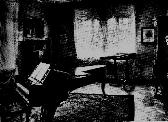 However,
soon afterwards both teachers proved disappointments. In his diary he wrote
about Wieck: “He is truly an ill-tempered man. When Allwin (Wieck’s
young son) didn’t play well, [Wieck] threw him to the ground, pulled him
by the hair, all the while shaking and staggering…Zilia (Clara Wieck,
daughter from his first marriage, and a highly gifted pianist) just smiled
through all of this, sitting down quietly at the piano to play a Weber
Sonata. Am I among human beings here?” And as for the compositions of his
theory teacher: “Dorn’s music. It is as futile as dogs trying to catch
birds. Rabbits you can shoot dead, but you cannot strangle a lion.”
However,
soon afterwards both teachers proved disappointments. In his diary he wrote
about Wieck: “He is truly an ill-tempered man. When Allwin (Wieck’s
young son) didn’t play well, [Wieck] threw him to the ground, pulled him
by the hair, all the while shaking and staggering…Zilia (Clara Wieck,
daughter from his first marriage, and a highly gifted pianist) just smiled
through all of this, sitting down quietly at the piano to play a Weber
Sonata. Am I among human beings here?” And as for the compositions of his
theory teacher: “Dorn’s music. It is as futile as dogs trying to catch
birds. Rabbits you can shoot dead, but you cannot strangle a lion.” 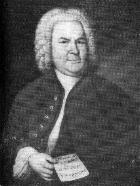 He sent the following lines to his old teacher in Zwickau: “Bach’s Well-Tempered
Clavier is my textbook, the absolute best. I have analyzed the fugues one
after the other down to the finest detail, for Bach was a complete being—he
did nothing halfway or weakly, and everything was composed for the ages.”
He sent the following lines to his old teacher in Zwickau: “Bach’s Well-Tempered
Clavier is my textbook, the absolute best. I have analyzed the fugues one
after the other down to the finest detail, for Bach was a complete being—he
did nothing halfway or weakly, and everything was composed for the ages.”
Excessive practice had left Schumann with
a lamed middle finger, a fate that resulted in an intensification of his
activity as a composer. At the same time he began work as a musical journalist
with the publication of an enthusiastic article about Frédéric
Chopin. In his notebook he wrote: "A magazine for 'music to come' is still
lacking. The only suitable editors would b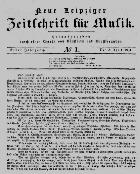 e
men like the old blind cantor of the Thomasschule [Bach] and the deaf Viennese
Kapellmeister [Beethoven]." In 1834, when Schumann was twenty-four years
old, he founded his own magazine, the Neue Zeitschrift für Musik,
which he turned into one of the leading journals in Germany. "On stage
Rossini still ruled, and on the piano exclusively [Henri] Herz and [Franz]
Hünten. This despite the fact that only a few years had passed since
Beethoven, C. M. von Weber and Franz Schubert had lived amongst us. To
be sure Mendelssohn's star was on the rise, and wonderful things were rumored
about a Pole named Chopin, but their ultimate influence had not yet made
itself manifest," wrote Schumann much later in an introduction to a new
edition of articles in book form. His discernment in regard to other composers
was extraordinary; the above-mentioned composers became widely known through
his articles and his impulse for discovery. In this way Schumann found
Schubert's Symphony in C major at Schubert's brother's house in Vienna,
which he sent to Mendelssohn for the world premiere. About Richard Wagner
he wrote: "He could be of great import for the stage, and if I have judged
him right, he has the courage to do it." His visionary conviction discovered
Johannes Brahms, of whom he wrote the famous 1853 article "New Paths."
Far more well-read than other composers, Schumann could also discern literary
wheat from chaff.
e
men like the old blind cantor of the Thomasschule [Bach] and the deaf Viennese
Kapellmeister [Beethoven]." In 1834, when Schumann was twenty-four years
old, he founded his own magazine, the Neue Zeitschrift für Musik,
which he turned into one of the leading journals in Germany. "On stage
Rossini still ruled, and on the piano exclusively [Henri] Herz and [Franz]
Hünten. This despite the fact that only a few years had passed since
Beethoven, C. M. von Weber and Franz Schubert had lived amongst us. To
be sure Mendelssohn's star was on the rise, and wonderful things were rumored
about a Pole named Chopin, but their ultimate influence had not yet made
itself manifest," wrote Schumann much later in an introduction to a new
edition of articles in book form. His discernment in regard to other composers
was extraordinary; the above-mentioned composers became widely known through
his articles and his impulse for discovery. In this way Schumann found
Schubert's Symphony in C major at Schubert's brother's house in Vienna,
which he sent to Mendelssohn for the world premiere. About Richard Wagner
he wrote: "He could be of great import for the stage, and if I have judged
him right, he has the courage to do it." His visionary conviction discovered
Johannes Brahms, of whom he wrote the famous 1853 article "New Paths."
Far more well-read than other composers, Schumann could also discern literary
wheat from chaff.
He wrote his articles from the viewpoints
of different characters. Eusebius was his term for the rational, sensitive
side, which "rapturously but deliberately plucks one flower petal after
another." Florestan was the powerful, enthusiastic side, that "saw the
future, the novel and unusual far in advance," while Master Raro was the
mediator, who "used the yardstick of masters and masterworks to evaluate
his own accomplishments." In Schumann's diary August 14th, the day he was
engaged to his future wife Clara, was Eusebius Day. "And here I shall
name another union, one that was very secret, and existed only in the head
of its creator, namely the Davidsbündler. In presenting different
viewpoints of artistic perception it was convenient to invent opposing
artistic characters, of which Florestan and Eusebius were the most important
and between whom stood the mediating Master Raro. This brotherhood of Davidsbündler
was a reoccurring theme in the magazine, combining 'truth and poetry' in
humorous fashion."
Henriette Voigt, who had met Schumann through
his friend, the pianist Ludwig Schuncke (who died young), introduced the
composer to Ernestine von Fricken, a pupil of Schumann’s own piano teacher
Friedrich Wieck. Schumann fell in love with the young woman. Letters to
Henriette Voigt soon voiced doubts about this liaison, though Friedrich
Wieck supported the infatuation to divert Schumann’s attention from his
daughter Clara. Ernestine would later support Clara and Robert’s relationship
in their struggle with Wieck.
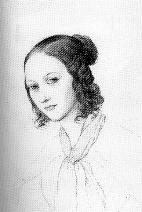 Schumann,
at 25, lived in Leipzig, and was aware that he would be neither lawyer,
as his mother had wished, nor author, but rather pianist or composer. He
felt himself irresistibly attracted to Clara Wieck, the daughter of his
piano teacher. Papa Wieck forbade any contact between the two, even letters
were not allowed. Her life was dedicated to her concert career, with papa
as her manager. At this time, music became more than ever Schumann’s method
of communication. His mother’s death added to his inner turmoil.
Schumann,
at 25, lived in Leipzig, and was aware that he would be neither lawyer,
as his mother had wished, nor author, but rather pianist or composer. He
felt himself irresistibly attracted to Clara Wieck, the daughter of his
piano teacher. Papa Wieck forbade any contact between the two, even letters
were not allowed. Her life was dedicated to her concert career, with papa
as her manager. At this time, music became more than ever Schumann’s method
of communication. His mother’s death added to his inner turmoil.
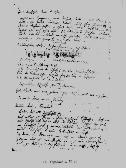 He
completed three sonatas, each with its own primal motif threaded through
the entire work, which surfaces in the finest nuances and shadings of variation.
This “Schumann style” is most evident in the sonatas. Nevertheless, each
of the three works has an entirely individual expression. Schumann's "Piano
Sonata no. 1 in F-sharp minor," Op. 11 was dedicated to Clara Wieck,
who reacted enthusiastically after first reading through it. Franz Liszt
regarded the work as the best of its genre since Beethoven. The Sonata
in F minor is the darkest and most troubled of Schumann’s works. The Sonata
in G minor, op. 22, is the shortest and most transparent (apart from the
original Finale Presto, without opus number) of his three sonatas.
He
completed three sonatas, each with its own primal motif threaded through
the entire work, which surfaces in the finest nuances and shadings of variation.
This “Schumann style” is most evident in the sonatas. Nevertheless, each
of the three works has an entirely individual expression. Schumann's "Piano
Sonata no. 1 in F-sharp minor," Op. 11 was dedicated to Clara Wieck,
who reacted enthusiastically after first reading through it. Franz Liszt
regarded the work as the best of its genre since Beethoven. The Sonata
in F minor is the darkest and most troubled of Schumann’s works. The Sonata
in G minor, op. 22, is the shortest and most transparent (apart from the
original Finale Presto, without opus number) of his three sonatas.
The first sketch for the Fantasie, op.
17, occurred at the time of Schumann’s enforced separation from Clara Wieck.
At the beginning of the Davidsbündlertänze op.6 he quoted Clara
Wieck’s Marzurka, op. 6, no. 5. Afterwards followed two books of nine dances
each.
In August of the year 1838 Clara conzertized
extensively in Leipzig. She included pieces from the Symphonic Etudes,
op. 13, an important sign for Robert Schumann after long years of disappointment.
He wrote her, “… answer me with a simple ‘yes.’” Two days later she replied:
“…how could a heart so full of unspoken love as mine not speak the short
word aloud? I do so, and my deepest self whispers it to you eternally…”
However, her father rejected the match, and attempted to get rid of Schumann.
The latter’s entreaties were made with new energy. 
He was often forced to finance publication
of his works with his own money. The magazine also required a great deal
of labor. Over the seven years of his involvement, in addition to
myriad articles he wrote approximately 3,000 business letters. His beloved
Clara Wieck traveled with her father to Vienna and enjoyed a great success,
though exclusively with the bravura repertoire typical of the time. The
Kinderszenen, op. 15, appeared at the beginning of 1838, and soon found
widespread distribution. The Träumerei from this cycle of a total
of thirteen pieces remains Schumann’s best-known piece even today. As counterpart
to Kinderszenen he produced Kreisleriana, op. 16, in which he “invested
a real, proper, and wild love.”
In autumn of 1838 Schumann traveled to
Vienna, vainly attempting to establish himself during a half-year stay.
His most important experience there was the discovery of Schubert’s C major
Symphony, which he immediately sent to Mendelssohn in Leipzig for its world
premiere. Schumann regarded it as the greatest work composed since Beethoven.
He also wrote, “I often feel like crushing the piano, which seems too limited
a vehicle for my ideas.” After attempts at quartets and piano concerti
he finally composed the last works of his so-called Piano Period: Arabeske
op. 18, Blumenstück op. 19, Humoreske op. 20, Faschingsschwank aus
Wien op. 26, Nachtstücke op. 23, Romanzen op. 28, and Klavierstücke
op. 32.
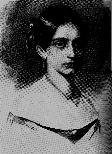 At
the beginning of the year 1839 Clara traveled to Paris, this time without
her father Friedrich Wieck. In fact, the two young people decided to initiate
a lawsuit against Wieck in order to arrange their marriage with out his
consent. Clara's mother Marianne Bargiel, divorced from Friedrich Wieck
and living in Berlin, threw her support to the young pair. An attempt at
mediating the dispute ended without success. Wieck's complaints of inflicted
illness and defamation influenced both court and public opinion, and provoked
a dangerous crisis in Schumann's health. For a time he was hardly able
to compose. At a friend's intervention he was awarded a doctorate from
the University of Jena, which somewhat improved his standing in the court
case against Wieck. After a number of episodes Schumann received the approval
of the courts for the marriage to Clara in August, 1840 (and Wieck was
sentenced to 18 days in jail for slander). On September 12, the evening
before Clara's twenty-first birthday, the wedding was celebrated in the
village church of Schönefeld (Leipzig). The Lieder cycle "Myrthen"
would be Schumann's wedding present to Clara.
At
the beginning of the year 1839 Clara traveled to Paris, this time without
her father Friedrich Wieck. In fact, the two young people decided to initiate
a lawsuit against Wieck in order to arrange their marriage with out his
consent. Clara's mother Marianne Bargiel, divorced from Friedrich Wieck
and living in Berlin, threw her support to the young pair. An attempt at
mediating the dispute ended without success. Wieck's complaints of inflicted
illness and defamation influenced both court and public opinion, and provoked
a dangerous crisis in Schumann's health. For a time he was hardly able
to compose. At a friend's intervention he was awarded a doctorate from
the University of Jena, which somewhat improved his standing in the court
case against Wieck. After a number of episodes Schumann received the approval
of the courts for the marriage to Clara in August, 1840 (and Wieck was
sentenced to 18 days in jail for slander). On September 12, the evening
before Clara's twenty-first birthday, the wedding was celebrated in the
village church of Schönefeld (Leipzig). The Lieder cycle "Myrthen"
would be Schumann's wedding present to Clara.
mbasting@t-online.de
Translation: William Melton
© Franz Vorraber

 An
additional creative province was literature. His father’s bookshop gave
him access to the newest works of poets, as well as the newest musical
compositions. Schumann wrote poems, speeches, and essays, and devoured
works by colleagues like Goethe, Schiller, Hölderlin, Byron, Shakespeare,
and later Jean Paul. Schumann was fourteen years old when his older sister
committed suicide. At sixteen he lost his father, who had encouraged Robert’s
musical inclinations and shortly before his death had recommended him to
Carl Maria von Weber.
An
additional creative province was literature. His father’s bookshop gave
him access to the newest works of poets, as well as the newest musical
compositions. Schumann wrote poems, speeches, and essays, and devoured
works by colleagues like Goethe, Schiller, Hölderlin, Byron, Shakespeare,
and later Jean Paul. Schumann was fourteen years old when his older sister
committed suicide. At sixteen he lost his father, who had encouraged Robert’s
musical inclinations and shortly before his death had recommended him to
Carl Maria von Weber.  Schumann’s
character was altered: he became quieter and lived more within himself.
Schumann’s
character was altered: he became quieter and lived more within himself.
 After
graduating from Gymnasium with honors Schumann went to Leipzig to study
law as his mother and guardian wished. But there he also took piano lessons
from Friedrich Wieck, performed intensively (Schubert’s Piano Trio in E-flat),
and composed an attractive Piano Quintet. At the age of 19 he resettled
in Heidelberg and first appeared there as a pianist. Over Easter he experienced
Paganini in Frankfurt, who “greatly inspired my diligence, but was wanting
in terms of elevated, noble, and priestly artistic repose.”
After
graduating from Gymnasium with honors Schumann went to Leipzig to study
law as his mother and guardian wished. But there he also took piano lessons
from Friedrich Wieck, performed intensively (Schubert’s Piano Trio in E-flat),
and composed an attractive Piano Quintet. At the age of 19 he resettled
in Heidelberg and first appeared there as a pianist. Over Easter he experienced
Paganini in Frankfurt, who “greatly inspired my diligence, but was wanting
in terms of elevated, noble, and priestly artistic repose.”
 However,
soon afterwards both teachers proved disappointments. In his diary he wrote
about Wieck: “He is truly an ill-tempered man. When Allwin (Wieck’s
young son) didn’t play well, [Wieck] threw him to the ground, pulled him
by the hair, all the while shaking and staggering…Zilia (Clara Wieck,
daughter from his first marriage, and a highly gifted pianist) just smiled
through all of this, sitting down quietly at the piano to play a Weber
Sonata. Am I among human beings here?” And as for the compositions of his
theory teacher: “Dorn’s music. It is as futile as dogs trying to catch
birds. Rabbits you can shoot dead, but you cannot strangle a lion.”
However,
soon afterwards both teachers proved disappointments. In his diary he wrote
about Wieck: “He is truly an ill-tempered man. When Allwin (Wieck’s
young son) didn’t play well, [Wieck] threw him to the ground, pulled him
by the hair, all the while shaking and staggering…Zilia (Clara Wieck,
daughter from his first marriage, and a highly gifted pianist) just smiled
through all of this, sitting down quietly at the piano to play a Weber
Sonata. Am I among human beings here?” And as for the compositions of his
theory teacher: “Dorn’s music. It is as futile as dogs trying to catch
birds. Rabbits you can shoot dead, but you cannot strangle a lion.”  He sent the following lines to his old teacher in Zwickau: “Bach’s Well-Tempered
Clavier is my textbook, the absolute best. I have analyzed the fugues one
after the other down to the finest detail, for Bach was a complete being—he
did nothing halfway or weakly, and everything was composed for the ages.”
He sent the following lines to his old teacher in Zwickau: “Bach’s Well-Tempered
Clavier is my textbook, the absolute best. I have analyzed the fugues one
after the other down to the finest detail, for Bach was a complete being—he
did nothing halfway or weakly, and everything was composed for the ages.”
 e
men like the old blind cantor of the Thomasschule [Bach] and the deaf Viennese
Kapellmeister [Beethoven]." In 1834, when Schumann was twenty-four years
old, he founded his own magazine, the Neue Zeitschrift für Musik,
which he turned into one of the leading journals in Germany. "On stage
Rossini still ruled, and on the piano exclusively [Henri] Herz and [Franz]
Hünten. This despite the fact that only a few years had passed since
Beethoven, C. M. von Weber and Franz Schubert had lived amongst us. To
be sure Mendelssohn's star was on the rise, and wonderful things were rumored
about a Pole named Chopin, but their ultimate influence had not yet made
itself manifest," wrote Schumann much later in an introduction to a new
edition of articles in book form. His discernment in regard to other composers
was extraordinary; the above-mentioned composers became widely known through
his articles and his impulse for discovery. In this way Schumann found
Schubert's Symphony in C major at Schubert's brother's house in Vienna,
which he sent to Mendelssohn for the world premiere. About Richard Wagner
he wrote: "He could be of great import for the stage, and if I have judged
him right, he has the courage to do it." His visionary conviction discovered
Johannes Brahms, of whom he wrote the famous 1853 article "New Paths."
Far more well-read than other composers, Schumann could also discern literary
wheat from chaff.
e
men like the old blind cantor of the Thomasschule [Bach] and the deaf Viennese
Kapellmeister [Beethoven]." In 1834, when Schumann was twenty-four years
old, he founded his own magazine, the Neue Zeitschrift für Musik,
which he turned into one of the leading journals in Germany. "On stage
Rossini still ruled, and on the piano exclusively [Henri] Herz and [Franz]
Hünten. This despite the fact that only a few years had passed since
Beethoven, C. M. von Weber and Franz Schubert had lived amongst us. To
be sure Mendelssohn's star was on the rise, and wonderful things were rumored
about a Pole named Chopin, but their ultimate influence had not yet made
itself manifest," wrote Schumann much later in an introduction to a new
edition of articles in book form. His discernment in regard to other composers
was extraordinary; the above-mentioned composers became widely known through
his articles and his impulse for discovery. In this way Schumann found
Schubert's Symphony in C major at Schubert's brother's house in Vienna,
which he sent to Mendelssohn for the world premiere. About Richard Wagner
he wrote: "He could be of great import for the stage, and if I have judged
him right, he has the courage to do it." His visionary conviction discovered
Johannes Brahms, of whom he wrote the famous 1853 article "New Paths."
Far more well-read than other composers, Schumann could also discern literary
wheat from chaff.
 Schumann,
at 25, lived in Leipzig, and was aware that he would be neither lawyer,
as his mother had wished, nor author, but rather pianist or composer. He
felt himself irresistibly attracted to Clara Wieck, the daughter of his
piano teacher. Papa Wieck forbade any contact between the two, even letters
were not allowed. Her life was dedicated to her concert career, with papa
as her manager. At this time, music became more than ever Schumann’s method
of communication. His mother’s death added to his inner turmoil.
Schumann,
at 25, lived in Leipzig, and was aware that he would be neither lawyer,
as his mother had wished, nor author, but rather pianist or composer. He
felt himself irresistibly attracted to Clara Wieck, the daughter of his
piano teacher. Papa Wieck forbade any contact between the two, even letters
were not allowed. Her life was dedicated to her concert career, with papa
as her manager. At this time, music became more than ever Schumann’s method
of communication. His mother’s death added to his inner turmoil.
 He
completed three sonatas, each with its own primal motif threaded through
the entire work, which surfaces in the finest nuances and shadings of variation.
This “Schumann style” is most evident in the sonatas. Nevertheless, each
of the three works has an entirely individual expression. Schumann's "Piano
Sonata no. 1 in F-sharp minor," Op. 11 was dedicated to Clara Wieck,
who reacted enthusiastically after first reading through it. Franz Liszt
regarded the work as the best of its genre since Beethoven. The Sonata
in F minor is the darkest and most troubled of Schumann’s works. The Sonata
in G minor, op. 22, is the shortest and most transparent (apart from the
original Finale Presto, without opus number) of his three sonatas.
He
completed three sonatas, each with its own primal motif threaded through
the entire work, which surfaces in the finest nuances and shadings of variation.
This “Schumann style” is most evident in the sonatas. Nevertheless, each
of the three works has an entirely individual expression. Schumann's "Piano
Sonata no. 1 in F-sharp minor," Op. 11 was dedicated to Clara Wieck,
who reacted enthusiastically after first reading through it. Franz Liszt
regarded the work as the best of its genre since Beethoven. The Sonata
in F minor is the darkest and most troubled of Schumann’s works. The Sonata
in G minor, op. 22, is the shortest and most transparent (apart from the
original Finale Presto, without opus number) of his three sonatas.

 At
the beginning of the year 1839 Clara traveled to Paris, this time without
her father Friedrich Wieck. In fact, the two young people decided to initiate
a lawsuit against Wieck in order to arrange their marriage with out his
consent. Clara's mother Marianne Bargiel, divorced from Friedrich Wieck
and living in Berlin, threw her support to the young pair. An attempt at
mediating the dispute ended without success. Wieck's complaints of inflicted
illness and defamation influenced both court and public opinion, and provoked
a dangerous crisis in Schumann's health. For a time he was hardly able
to compose. At a friend's intervention he was awarded a doctorate from
the University of Jena, which somewhat improved his standing in the court
case against Wieck. After a number of episodes Schumann received the approval
of the courts for the marriage to Clara in August, 1840 (and Wieck was
sentenced to 18 days in jail for slander). On September 12, the evening
before Clara's twenty-first birthday, the wedding was celebrated in the
village church of Schönefeld (Leipzig). The Lieder cycle "Myrthen"
would be Schumann's wedding present to Clara.
At
the beginning of the year 1839 Clara traveled to Paris, this time without
her father Friedrich Wieck. In fact, the two young people decided to initiate
a lawsuit against Wieck in order to arrange their marriage with out his
consent. Clara's mother Marianne Bargiel, divorced from Friedrich Wieck
and living in Berlin, threw her support to the young pair. An attempt at
mediating the dispute ended without success. Wieck's complaints of inflicted
illness and defamation influenced both court and public opinion, and provoked
a dangerous crisis in Schumann's health. For a time he was hardly able
to compose. At a friend's intervention he was awarded a doctorate from
the University of Jena, which somewhat improved his standing in the court
case against Wieck. After a number of episodes Schumann received the approval
of the courts for the marriage to Clara in August, 1840 (and Wieck was
sentenced to 18 days in jail for slander). On September 12, the evening
before Clara's twenty-first birthday, the wedding was celebrated in the
village church of Schönefeld (Leipzig). The Lieder cycle "Myrthen"
would be Schumann's wedding present to Clara.